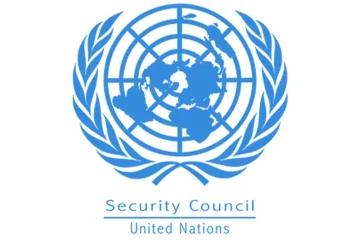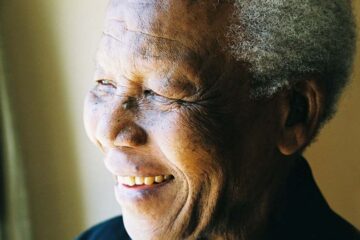THERE are close to 4 million people living in refugee camps across Africa. Of the more than 300 camps, nearly 70% are situated within 30km-50km of an international border. They include some of the largest camps in the continent, such as Kakuma in northern Kenya, Nyarugusu in western Tanzania and Bidibidi in north-western Uganda.

The closer the camp is to an international border, the easier it is for people on both sides of the border to interact.
What this means is that healthy refugees in Kakuma, for example, can walk across the Kenyan border and get to Uganda or South Sudan within a day or two. It also means that rebel groups operating in any of these countries can access the refugee camp. This easy access to refugees benefits rebel groups across the border. And asylum countries like Tanzania and Kenya may choose refugee policies that help rebel groups in this fashion.
Exploitation by armed groups is one of the many threats refugees in border camps face. Often refugees are not allowed to leave camps to seek work, making them dependent on aid. Young refugees, particularly men, are vulnerable to armed rebel groups that recruit people to their causes. These groups also informally tax refugees by taking a share of the aid they receive or demanding contributions.
Researchers and aid groups have suggested that rebel groups take advantage of refugees because host countries cannot or will not stop them. This logic focuses on the lack of will or capacity of such host countries as Chad or the Central African Republic. But this ignores their strategy.
Even governments of poor countries choose where to allocate resources. For example, rather than being inept or incapable of protection, Chad’s approach to refugees has been consistent with a broader approach to its relations with Sudan.
I set out on my research project in east Africa to develop an analytic narrative of refugee policy selection in the region. Using in-depth case studies and formal theory, I expected to find that foreign policy informed refugee policy in some ways, including interactions with humanitarian aid and donor countries. I sought to investigate the extent to which these tempered the domestic drivers of refugee policy.
What I found is that countries’ policies for hosting refugees are more strategic than expected. Host countries choose their refugee policy to influence the war from which the refugees fled. When Tanzania and Kenya chose the location of camps and the restrictions on work and movement, it was to influence civil wars across their borders. Camp location and restrictions, along with dense refugee settlements, give rebel groups valuable access to refugee camps for exploitation.
My study demonstrates that east African host countries can follow a foreign policy logic for setting refugees up to be exploited. Domestic considerations can matter as well.
My research can help aid organisations identify whether domestic or foreign policy interests drive border camps in east Africa and elsewhere. When domestic rather than foreign policy considerations drive border camp location, humanitarian agencies can negotiate alternatives that make camps less crowded, move refugees further from the border or provide options for integrating elsewhere.
Each of these make refugee camps safer for refugees but less valuable to a rebel group. However, aid agencies will be less successful in negotiating alternatives when foreign policy drives the border camps because the alternatives undermine the goal of helping the rebel group.
Proxy intervention aims
Tanzania’s refugee policy in the 1990s is a good example of how geopolitics can inform refugee policy. Tanzania hosted hundreds of thousands of Burundian refugees. They began arriving in 1993 because of political violence and then a civil war. Densely populated camps were set up for arriving Burundian refugees as close as 15km to the common border.
The location, dense population and movement restrictions ensured that aid groups could serve the refugees. But the refugees were also ideal targets for recruitment and taxation, unable to work and with aid that could be taken away as efficiently as it was distributed.
Tanzania need not have established crowded camps on the border but this favoured its goals. Tanzania’s aim was to create pressure to return Burundi to a government consistent with the 1993 constitution. Tanzania hoped that by Burundi holding multiparty elections and selecting a government backed by the majority of its citizens, Burundi would gain some stability.
At the same time, Tanzania sought to avoid a domestic backlash from the host population in the north-west who were growing weary of hosting refugees.
For Burundian rebel groups, the policy created a constant flow of resources and people from the camps to the front lines, which put the rebel groups in a better position to fight. Tanzania, which also hosted the peace accords, used a variety of tools of statecraft to end the war, and refugee policy was one of them. The better position to fight gave the rebel group more bargaining power. Since the rebel group also supported the 1993 constitution, a negotiated settlement where the rebel group had a pathway to elections would achieve this goal.
East Africa offers another example of the foreign policy logic. Following the fall of the Mengistu Haile Mariam regime in Ethiopia in 1990, refugees from southern Sudan left Ethiopia for Kenya. Kenya established camps for the Sudanese at Kakuma near the border with Sudan. This was in line with Kenya’s support for the Sudanese Peoples Liberation Army’s fight for autonomy. Like Tanzania, Kenya used multiple tools to sway the civil war outcome in their northern neighbour. Its combined efforts were instrumental in securing a pathway to independence for South Sudan.
Non-intervention as a policy goal
Tanzania and Kenya also offer a lesson in advancing foreign policy aims by not intervening.
At roughly the same time as Burundian refugees were being placed into crowded camps, Tanzania was also hosting between 70,000 and 300,000 Mozambicans. Many of them fled or could not return home because of civil war in Mozambique.
The Tanzanian and Mozambican governments have a long history of cooperation. Tanzania was also strongly opposed to the apartheid-backed rebel group, Mozambican National Resistance, or Renamo, which was battling the government.
Unlike refugees from Burundi, Mozambican arrivals were not housed in camps. Most Mozambicans were allowed to settle across the southern regions of Tanzania, where they integrated with their co-ethnics in rural villages. Their shared way of life made the experience more like the regular cross-border migration that has occurred for generations.
By dispersing refugees throughout the countryside, refusing aid and allowing Mozambicans to integrate, Tanzania’s strategy followed a logic of non-intervention. This ensured that the migrant population was not easily targeted by Renamo in keeping with its political backing of the Mozambique administration.
In Kenya’s case with Somalia, the tide turned from indifference to non-intervention within a span of six years.
After the United Nations pulled out of Somalia in 1995, Kenya shifted the policy for Somalis away from intervention while building a relationship with what would became the transitional government in Somalia. Kenya consolidated existing refugee camps and eliminated camps that were close to the border with Somalia and along the coast. Somali refugees were subsequently moved across the country to Kakuma in the north. Settlements in Nairobi were allowed to expand, which reinforced an informal pathway to make Dadaab – the remaining camp near the Somali border – less attractive for recruiting.
Conclusion
Most wars end in negotiated settlements. Rebel groups need to extract sufficient assurances to negotiate. If not, they are unwilling to take the risk of giving up the fight. Providing a rebel group with a stronger bargaining position could help along negotiations and bring about a peace agreement.
Giving a rebel group bargaining power by helping it fight a war can inform refugee policy. Alternatively, host countries might avoid camps specifically to prevent helping a rebel group.














